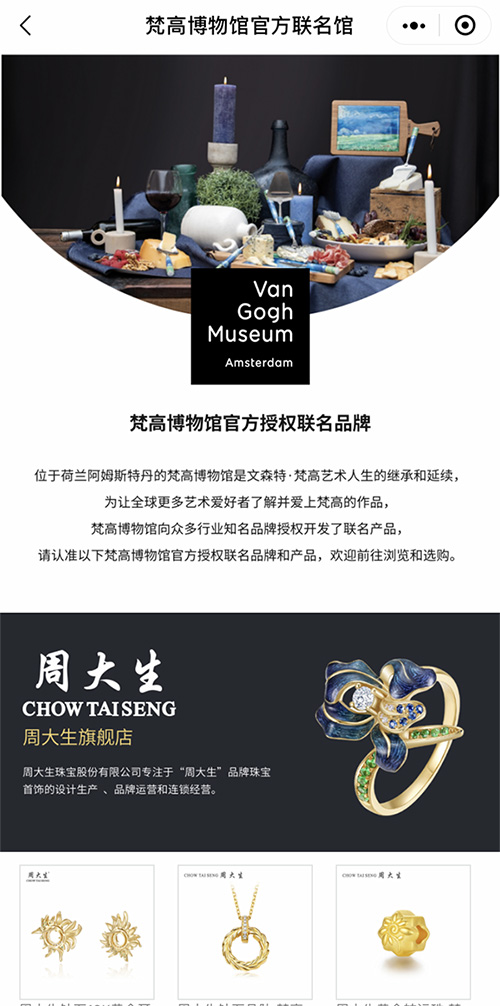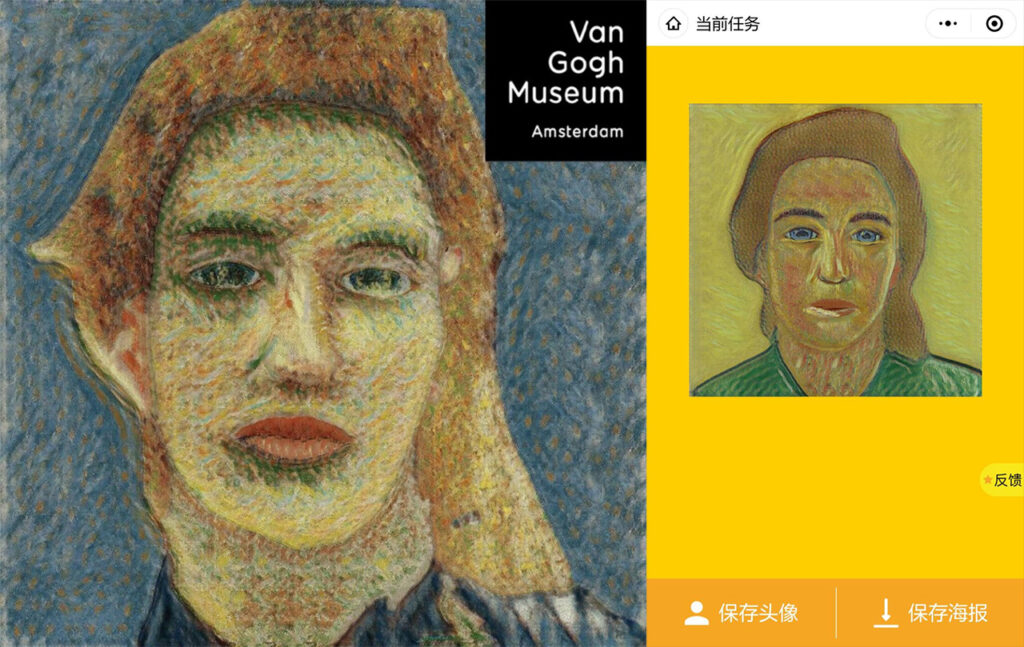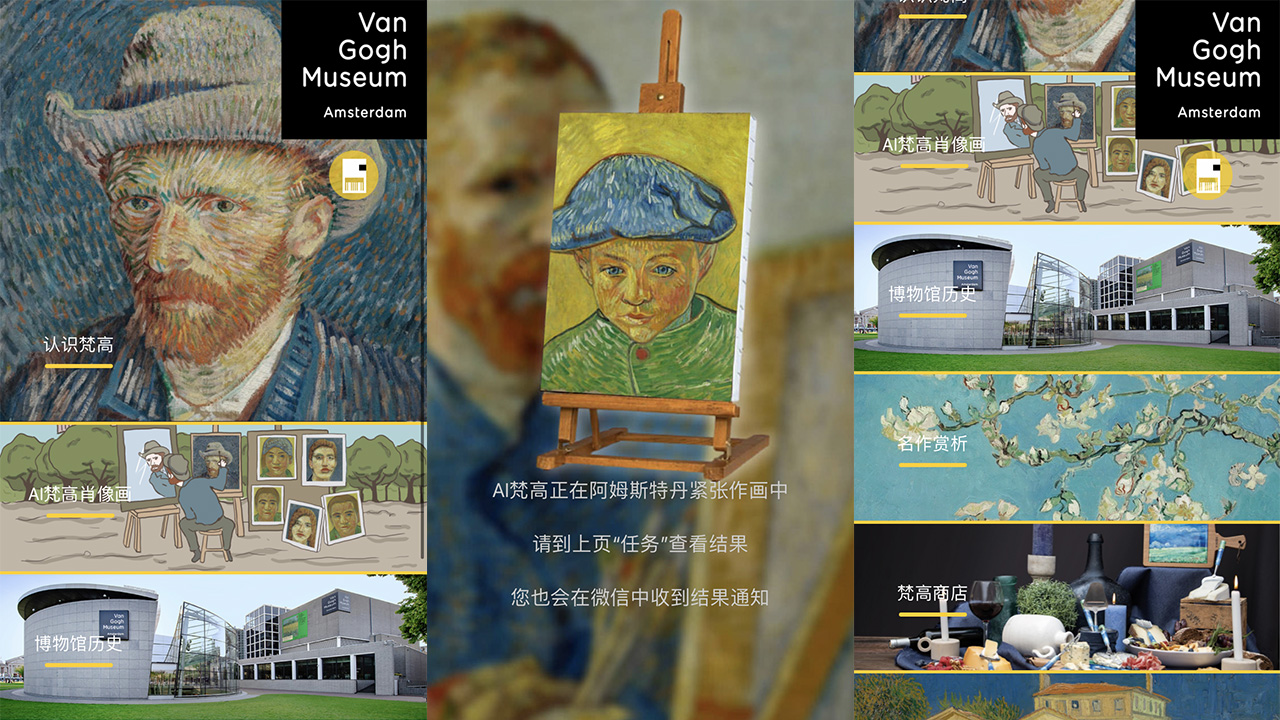Van Gogh’s popularity has often been understood in terms of the exuberant colors with which he depicted quotidian subjects from postmen to flower vases. Now, WeChat’s one billion-odd users can imagine themselves painted by the Dutchman by taking a selfie and loading it into AI Van Gogh, a feature integrated within the Van Gogh Museum’s newly launched Mini Program.
The Mini Program is the Amsterdam museum’s latest initiative to connect with Chinese audiences, one punctuated with a May 10 livestream on WeChat Channels, the app’s short-video feature. The tens of thousands of viewers who tuned in saw Willem Van Gogh introduce some of his great-granduncle’s most celebrated works including “Sunflowers” and “Bedroom in Arles”, as well as being able to ask questions and win lucky draw prizes.

The Mini Program retails products developed in partnership with Chinese brands such as Chow Taiseng and Soocas. Image: Van Gogh Museum on WeChat
Though the livestream was primarily an educational activity aimed at growing WeChat followers, as Martijn Pronk, the museum’s Head of Digital Communications tells Jing Culture & Commerce, the Mini Program is primarily aimed at generating revenue. “We wanted to add an e-commerce service to our official [WeChat] account, and chose the Mini Program for that reason. Commercial is our main objective.”
Aside from the ability to purchase tickets directly through the Mini Program, it offers a range of “high-quality products developed with heritage in mind and offered by official licensing partners,” says Jordy Howldar, Head of Business Development, Asia. “Our mission is to inspire a diverse audience with the life and work of Vincent Van Gogh.”
At present, it offers jewelry from Chinese labels Chow Taiseng and MGS — like 18K gold sunflower earrings or “Almond Blossom”-inspired pearl and silver necklaces — and “smart” household products with integrated Van Gogh IP from Soocas. The intention, Howldar notes, is to steadily roll out China-focused products with an increasing number of partners.
On the non-commercial side, the Mini Program boasts a wealth of biographical and art historical information, including audio explainers on famous paintings, a customer service chat function, maps, and the aforementioned AI Van Gogh. It has not, however, been developed for onsite use; that purpose is best served by the multimedia guide which the museum has offered in Mandarin Chinese for several years.

AI Van Gogh transforms users’ selfies into Impressionist-esque artworks in the style of the Dutch master. Image: Van Gogh Museum on WeChat
The museum’s courtship of Chinese audiences has been gradual and increasingly sophisticated. It began with printed Mandarin language resources in the mid-2010s, selling translated art books in the gift shop, and running a WeChat Official Account. The museum took a more direct approach beginning in 2016 with its immersive exhibition, Meet Vincent van Gogh, which has toured through Beijing, Shanghai, Sanya, and Macau — a success that opened its eyes to the China market potential and led to the appointment of IMG as the official Mainland licensing agent.
At a time when cultural institutions are hastily forging new revenue channels, the Van Gogh Museum is continuing along a path it has been developing for years: marketing one of the globe’s most iconic artists to China. In 2019, more than 115,000 of the museum’s 2.1 million visitors hailed from China; impressive no doubt, but the museum is well-aware that a dynamic WeChat strategy promises to deliver Van Gogh to many thousands more.



